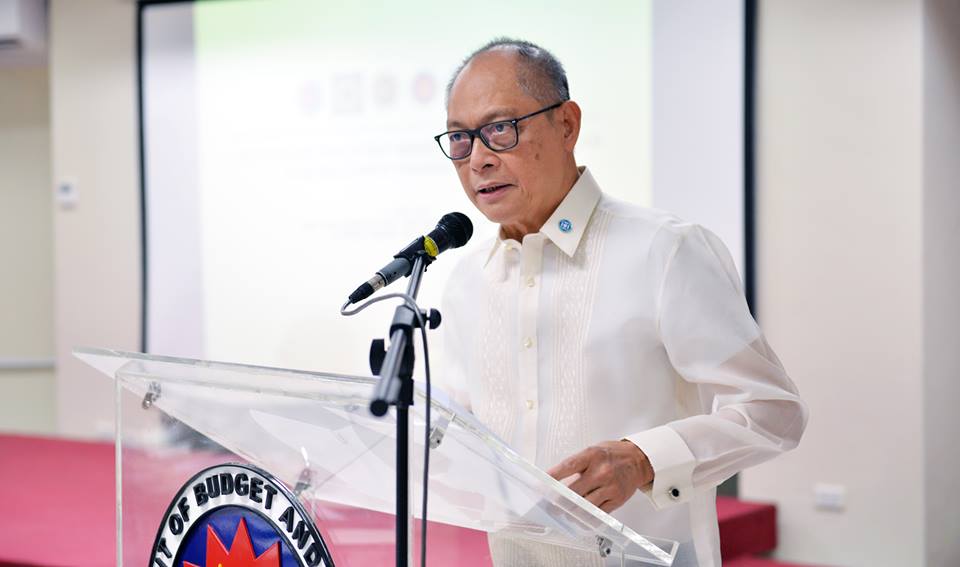Business and Economy
Proposed one-year validity of budget won’t lower gov’t spending

Diokno, in an interview by journalists Wednesday, said the shift is being made to ensure that agencies are up and about on the implementation of their projects as the Duterte administration have set a massive infrastructure program. (File Photo: Department of Budget and Management)
MANILA — Budget and Management Secretary Benjamin Diokno is optimistic that state agencies are ready to implement projects even as allocation for the proposed PHP3.757 trillion 2019 national budget will only have a one-year validity.
In the past, funds for a proposed project can be spent beyond the year for which it was allocated, but starting with the 2018 national budget, there will only be a three month leeway or end-March 2019.
Additional reforms are even proposed for next year’s budget since it will only have a one-year validity.
Diokno, in an interview by journalists Wednesday, said the shift is being made to ensure that agencies are up and about on the implementation of their projects as the Duterte administration have set a massive infrastructure program.
He said agencies should not worry about the financing of their projects if implementation will take several years since they only need to indicate the projects’ yearly funding requirements. He added agencies have been groomed for this change since 2017.
Asked if the new budgeting system will impact on the growth of government spending, Diokno answered in the negative. “Just be clear on how much the projects need annually and don’t commit funds that you don’t know how to spend,” he said.
Growth of government expenditures continues to rise as more infrastructure projects are implemented.
As of end-June 2018, government spending rose 20 percent year-on-year to PHP1.603 trillion, which in turn is two percent higher than the programmed PHP1.569 trillion. Economic officials are optimistic about a sustained rise of government spending in line with the “Build, Build, Build” program. Under this program the Duterte administration plans to spend at least PHP1 trillion annually until the end of its term in 2022.
Data from the Department of Budget and Management (DBM) website showed that government spending in the second quarter of this year alone rose by 11.5 percent due to the infrastructure program. Last June alone, total spending amounted to Php278.5 billion, up three percent than year-ago’s PHP270.7 billion.
Meanwhile, the rise in expenditures also pushed the government’s budget deficit to PHP193 billion as of end-June this year, 25 percent higher than year-ago’s PHP154.5 billion. This level, however, remains below the PHP264.3 billion programmed gap for the first six months this year.
Luis E. Breuer, head of the International Monetary Fund (IMF) team that conducted the Article IV Consultation in the Philippines from July 11-15, 2018, said “the government has been quite successful in ramping up public investment spending in the last two or three years.
The rise in spending came alongside the rise in tax collections, he said in a briefing at the Bangko Sentral ng Pilipinas (BSP) Wednesday. Government revenues in the first half this year totaled to PHP1.41 trillion, up 20 percent than year-ago’s PHP1.176 trillion. It surpassed by eight percent the PHP1.304 trillion programmed for the six-month period.
Breuer noted that this improvement was due to improved tax administration and the impact of tax reform. The first package of the proposed Comprehensive Tax Reform Program (CTRP) was signed into law in December 2017.
Called the Tax Reform for Acceleration and Inclusion (TRAIN) law, this package cut workers’ tax rates, increased excise taxes on petroleum products and introduced excise taxes on sugar-sweetened beverages and automobiles.
“We believe that it is possible to continue to expand public investment while keeping the overall deficit broadly unchanged because revenues are projected to be higher and there is space to re-allocate in the approved budget from non-priority sectors to infrastructure and social programs,” Breuer added.





















